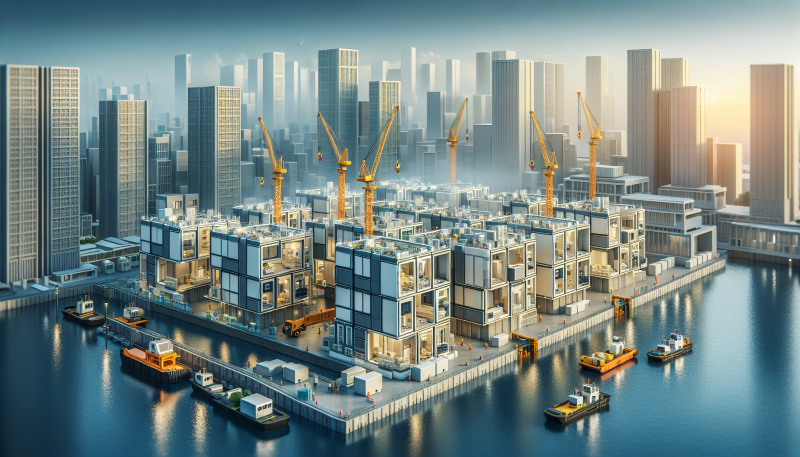For decades, the construction industry has relied on a familiar blueprint: on-site construction, weather delays and lengthy project timelines. But a revolution is quietly brewing, with modular construction emerging as a game-changer. This innovative approach, where building components are prefabricated off-site and assembled on location, is transforming the industry by offering a faster, more efficient and potentially more sustainable way to build.
The core concept of modular construction is akin to assembling Lego bricks. Standardized units, like walls, floors and even entire rooms, are built in a controlled factory environment. This allows for greater quality control, reduced waste and streamlined production – benefits that translate directly to the construction site.
Speeding Up the Build
One of the most significant advantages of modular construction is its ability to drastically reduce project timelines. Traditional construction is susceptible to weather delays, material shortages and unforeseen complications.
Modular construction, on the other hand, operates with a controlled environment and just-in-time delivery, minimizing disruptions. This can lead to completion times slashed by as much as 50% – a boon for businesses eager to get their projects up and running quickly.
For instance, a prefabricated building can be completed in just a few months compared to the years it takes using conventional methods. This time efficiency is especially relevant in densely populated urban areas where minimizing disruption is essential.
Cost Efficiency on the Rise
Faster construction translates to cost savings. With reduced on-site labor needs, minimized waste and improved predictability, modular construction offers the potential for significant cost reductions.
Studies suggest savings of up to 20% compared to traditional methods. This not only benefits developers but also opens doors for affordable housing initiatives and quicker disaster relief efforts.
Building a Sustainable Future
Modular construction boasts environmental benefits as well. Factory-controlled settings allow for stricter waste management and recycling practices.
Also, the inherent efficiency of the process reduces energy consumption on-site. Moreover, modular units can be designed with sustainable materials and energy-saving features, contributing to a greener built environment.
Revolution with a Hitch: Challenges Remain
Despite its evident advantages, modular construction faces some hurdles. One challenge lies in upfront costs. Setting up a modular production facility requires investment, which might deter smaller companies. Besides, transporting bulky modules can incur significant costs, especially for geographically dispersed projects.
Another hurdle is the need for a shift in mindset. Traditional builders may be hesitant to embrace a new approach. However, as the industry recognizes the long-term benefits, this resistance is likely to diminish.
The Future Looks Prefabricated
While not a one-size-fits-all solution, modular construction offers a compelling alternative for a variety of projects – from hotels and schools to hospitals and even high-rise buildings. As technology advances and production facilities become more standardized, the cost advantages are likely to become even more pronounced.
The future of construction is likely to see a blend of traditional and modular approaches, with projects leveraging the strengths of each. However, the potential of modular construction to transform the industry is undeniable. By offering speed, efficiency and sustainability, it has the power to reshape the way we build, paving the way for a future where structures rise faster, greener and more cost-effectively.

